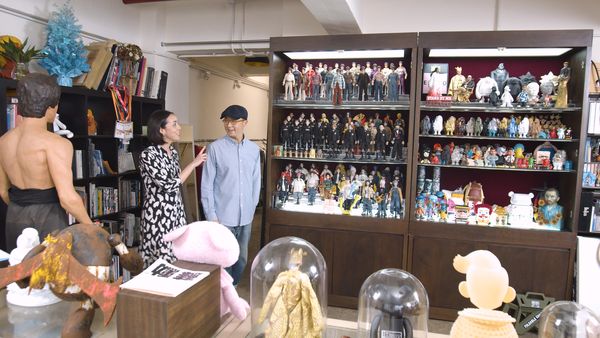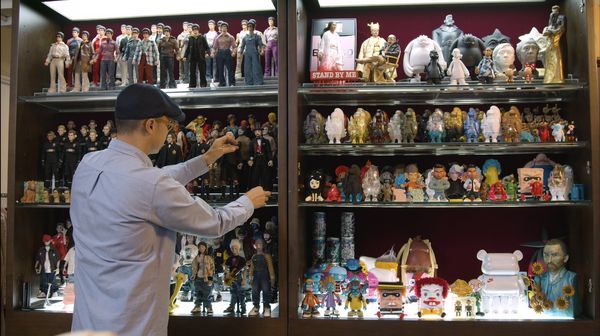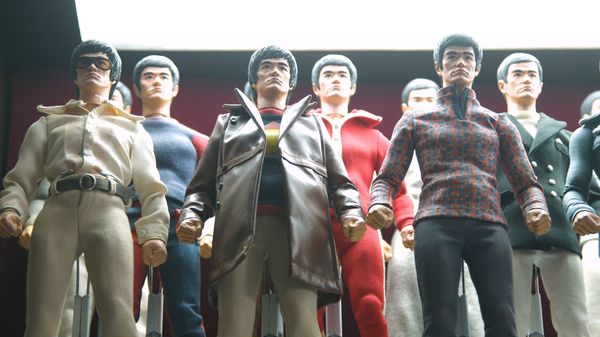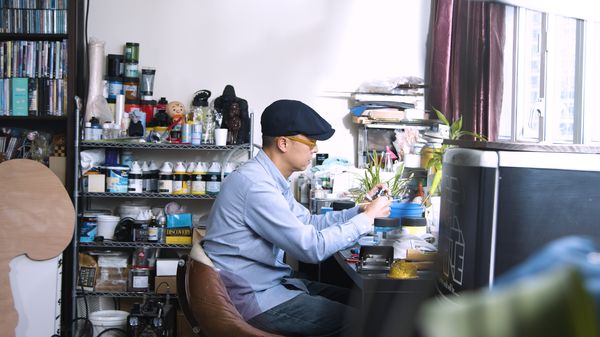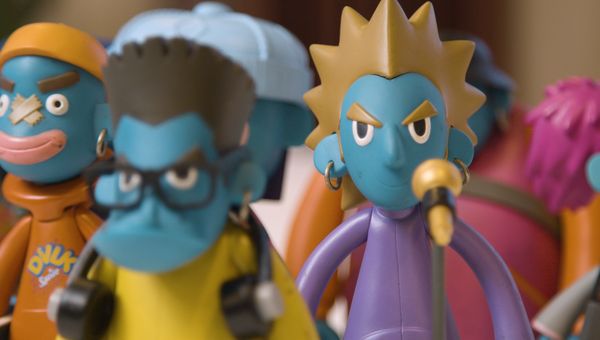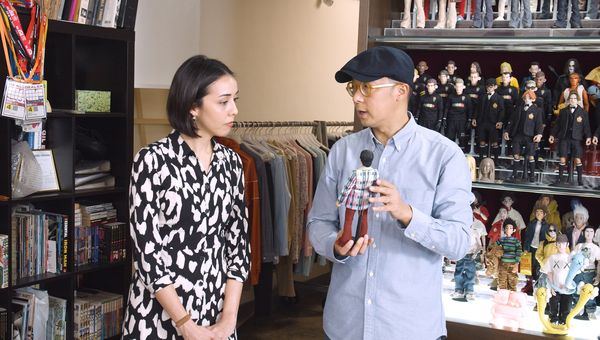Hong Kong toy artist icon Eric So became well-known in the late 1990s for his series of collectible Bruce Lee figurines that blurred lines between art, design and object. As the value for collectible toys in the art market continues to skyrocket, we paid a visit to one of the key innovators and predictors of this trend. In this first installment of our “Made in Hong Kong” series, Specialist and Head of Evening Sale Charlotte Raybaud sat down with Eric to learn more about the origins of his practice and how he sees the dominance of toys in the art market today.
CHARLOTTE RAYBAUD: Were you always an artist or did you become one at a specific point?
ERIC SO: I never deliberately planned on becoming an artist. My journey simply started with a love for drawing when I was very young, then I studied Design at school. I worked in an advertising firm once I graduated, started to paint, and only later ended up making toys and figurines.
I am merely using my hobby to communicate with people through various mediums including paintings, figurines, fashion, or other objects. So, when you ask me ‘how do I see myself as an artist,’ or ‘when did I become an artist,’ it’s hard to make a blanket statement. Am I an artist today, was I an artist yesterday, or will I be an artist in the future? Whether I am an artist, to me, is determined by whether I’m using an artistic angle to create an art piece, or if I’m working on a commercial project for a client. Whether I am an artist, it’s the intention during the specific moment in time when I create. This is actually a question that I think might be worthwhile for all of us to consider ourselves.
CR: Why did you start creating toys as art? What was the initial spark?
ES: As for when I started creating toys as art, I would say it was the Bruce Lee Collection. At that time, I wanted to curate an exhibition about Bruce Lee’s spirit and philosophy, aiming at passing down his knowledge to young people at that time.
However, Bruce Lee is known for his movies and kung fu, and communicating a more complex idea with a younger audience, or even to the general public, was seen as outdated and old-fashioned. Hence, I decided I needed to create a common language to connect with them: art. I asked myself: must art be all about paintings or sculptures? I decided to create figurines mixed with fashion, and use these as a platform to communicate with the younger generation.
CR: A lot of common plastic toys used to be made in Hong Kong, and when we think about “Made in Hong Kong” today, you as an artist are emblematic of this concept. Can you briefly talk about how your signature 'Bruce Lee' series may have shifted that perception?
ES: Yes, toys were often “Made in Hong Kong” in the past. But the industry shifted, and then we saw the emergence of “designer toys” 20 years ago, and now the concept is evolving once more to the latest “art toys”. I think a lot of people got to know me through my “Bruce Lee Collection” because I brought my collection to exhibit all around the world. From my exhibition, people came to realize that there was more happening in Hong Kong than they were aware of. Instead of participating in game fairs or trade shows, I presented them as art. The response I received was quite interesting. A lot of people asked: Why Bruce Lee? For a lot of people, Bruce Lee reminded them of movies or Kung Fu. The way I presented this lasting memory was completely different to their own perceptions. They were astounded by the concept of linking Bruce Lee to toy figures or fashion.
CR: Can you also talk about the creation/ production process? How long did it take to make these Bruce Lee figurines?
ES: The first step was to figure out how I could make them myself, because there was no way a factory would take on this project. Factories are pretty practical, in the sense that there is little room for experimentation. That’s why we started by making each one by hand. With my own background being in the advertising industry and having a design degree, I had the basic skills and knowledge needed in order to make them. One issue I faced though was the clothing, but because I was in advertising, I was lucky enough to have a friend who was a movie costume designer who could help me out. We had to do a lot of research on what Bruce Lee actually wore at the time. We even reached out to avid collectors of his memorabilia, or even his fans for their personal photos of Bruce Lee. I had to find maybe a few hundred photos of Bruce Lee just to complete one outfit for a figure. The whole process, from the research and preparation to the production for the collection, took me about a year before I could showcase them.
CR: Many artists like Yayoi Kusama, Yoshitomo Nara, Tomoo Gokita and of course KAWS have released their own toys or collectible items. This has attracted a lot of younger collectors because toys are considered a solid place to begin a collection. What do you think of this trend of “art toys” in the auction market?
ES: From what we used to call “designer toys” to the more recent “art toys”, this marked shift can be reflected in the name alone. In recent years, they have become “art toys” because famous artists merge their form of art into toys, which is completely different from something made by a toy factory. For example, in Hong Kong from the 1940s to the 1970s, toys were made in bulk by factories. No emphasis would ever be placed on the person or factory behind it.
I think that it is merely a description that defines the status of the toy, which comes from whether they are sold in a toy store, a design shop or the art market. Toys serve only as a platform for various interpretations.
CR: When considering the original term “toy makers”, the first people that came to my mind were traditional toy craftsmen that made toys with wood. Now that is quite different from the artists that make “designer toys”.
ES: Another point to mention, even with “designer toys”, there is still a difference between a toy that is being handmade by the designer or being manufactured in a factory. For me, I enjoy the making process and being hands-on with my designs. I think this brings it to another level, in terms of the skill and its artistic value.
CR: To add on another layer, a lot of designers and makers who “design toys” nowadays have a certain end user or audience in mind. This allows for interaction between the creator and its eventual consumer.
ES: The digital age fully enables this. For instance, some artists and creators now share videos of the making process online before the product has even been released onto the market. In a way, the consumer is already involved in the creation process. The relationship between consumer and creator is now closer than ever because of how transparent the making process can be.
CR: Here at Phillips, we have had a strong record of selling these collectible toys at auction. What do you think of auctioning these items, as both an artist and collector? Do you consider these collectible toys as a good start to collecting a certain artist’s works?
ES: I think it's a great thing. This shows how toys have transcended from being something for kids, to “designer toys” 20 years ago, to now, where they can be seen in the auction market. As these objects enter the global art market, a new status has been anointed to toys. They are no longer really toys at all: art toys are now just art.
